Author PAUL ADAMS gives us the lowdown on 5 top haunted sites in St Albans
Cathedral & Abbey Church of St Alban
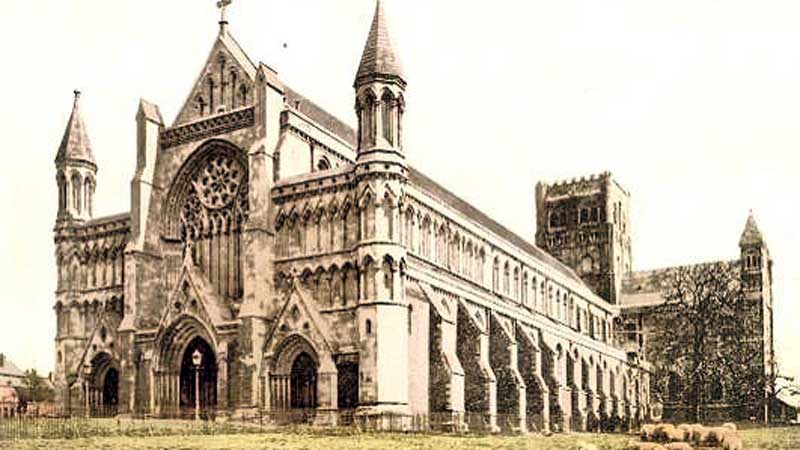
A Grade I listed building of national importance, St Albans Cathedral dominates the city skyline for many miles around and represents the oldest site of continuous Christian worship in the country with a history that stretches back over 1,700 years.
Long associated with the appearance of phantom monks and mysterious hooded figures, the Cathedral’s most notorious ghostly incident is alleged to have taken place on Christmas Eve, 24 December 1944.
It happened when Basil Saville, a 16 year-old fire watcher alone in the vast empty building, later claimed to have heard organ music and to witness a procession of robed monks led by a spectral abbot. Each monk held a lighted candle and passed down the nave and disappeared through the screen doors leading into the Saint’s Chapel.
Another group of ghostly figures were seen by a Cathedral verger in the 1930s, while the late Canon George Glossop was another churchman who claimed to have heard ghostly organ music, in particular the Albanus Mass by the 16th century choir director Robert Fayrfax, being played when the Abbey Church was ostensibly locked and empty.
Fishpool Street, St Albans
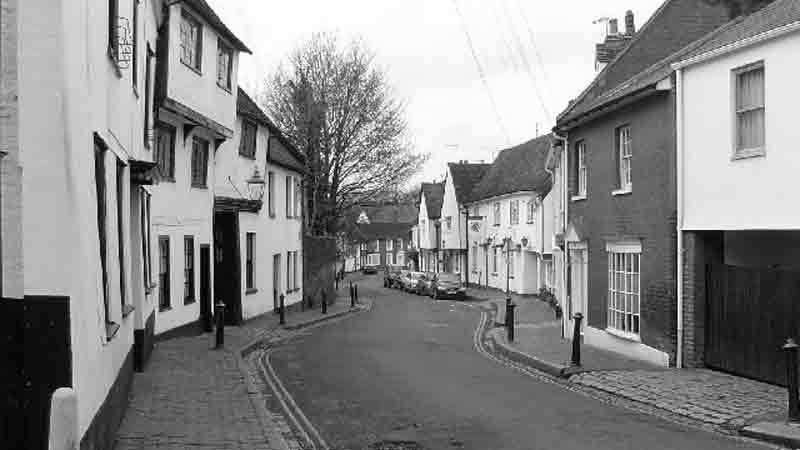
One of the most haunted thoroughfares in St Albans, Fishpool Street, named after a large fishpond that existed in the former fortified settlement of Kingsbury near the site in Anglo-Saxon times, boasts numerous apparitions and ghostly figures, several of which are said to be visible to travellers at night.
They include the apparition of a Colonial-style post-chaise drawn by two white ponies with the figures of a man in a Panama hat and a woman in a blue dress on the box; a man in a tall stove-pipe hat, and the unhappy shade of a crying woman haranguing herself for the death of her child, accidentally smothered to death in the eighteenth century.
A number of the buildings as well as the roadway itself are reputed to have paranormal associations.
A first floor bedroom in the seventeenth century Lower Red Lion Inn is said to be haunted by the apparition of an unknown woman as well as the unsettling sound of a crying child. The mysterious movement of the bedsteads has also been reported together with a shadowy figure, said to appear on occasion in the ground floor tap room.
Several private houses in Fishpool Street have their own ghosts which include two female apparitions, one friendly, the other of a rather unpleasant nature that tries to place its hands around the necks of the owners as they lie in bed at night, as well as the figure of a man in grey, and perhaps one of the oddest of all reported paranormal happenings, a disappearing window, or more accurately parts of a window which are said to have vanished and then returned after a period of several weeks.
Salisbury Hall, St Albans
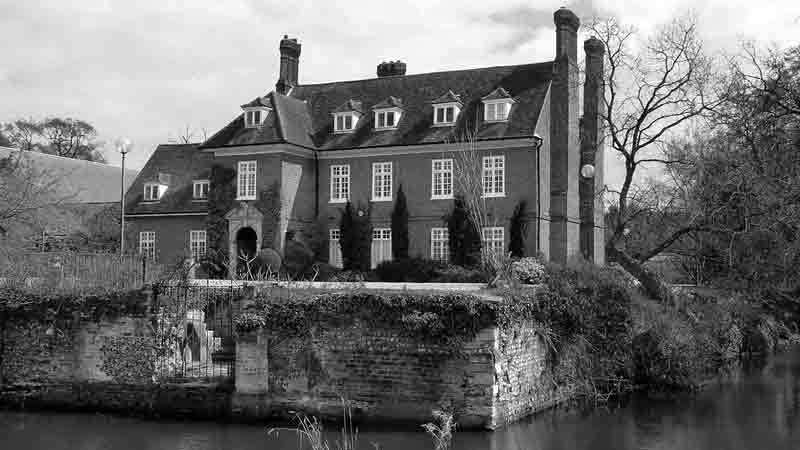
On the outskirts of St Albans is the 17th century manor house of Salisbury Hall, now a private house and well known today for its connection with the de Havilland aircraft company.
For many years, phantom figures were reported to have been seen in and around the hall including the figure of a Cavalier and the apparition of an attractive young woman with a blue fichu about her shoulders, said to be that of Nell Gwynne who entertained Charles II here for several years until the King’s death in 1684.
It may be her laugh that has been heard on a number of occasions by former staff in the garden when the grounds were apparently empty of visitors.
A small bedroom over the entrance porch, used for many years as a children’s nursery, was at one time plagued by the appearance of an unidentified figure which was seen to step out of the wall near to the fireplace; where during refurbishment work in the 1950s a bricked-up doorway was discovered hidden beneath the plaster.
The Grange, St Peter’s Street
This building was constructed in 1763 by John Osborne, a local dignitary and alderman who held the position of Mayor of St Albans on three separate occasions until his death in 1799.
Following World War II, The Grange was owned for many years by St Albans Council and soon gained a reputation for being haunted, although no accounts of experiences appear to survive today.
In 1975, a caretaker reported encountering an ‘eerie, icy atmosphere’ while alone in the basement area as well as an unseen presence which disappeared after he turned on all of the lights.
Today, The Grange is occupied by the Nationwide Building Society and several members of staff have reported the appearance of a silent woman in a grey dress walking along one of the first floor corridors.
White Hart Hotel, Holywell Hill
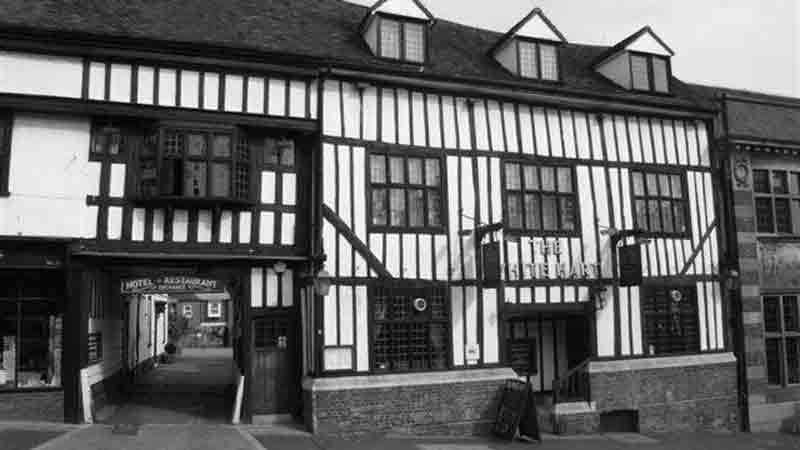
One of St Albans’ most attractive buildings, parts of the White Hart Hotel date back to the early 1500s.
In 1746, Simon Fraser, 11th Lord Lovat, the Jacobite rebel who was one of many Highlanders defeated at the Battle of Culloden, stayed a night at the White Hart on his way to the Tower of London.
Lovat had the distinction of being the last man to be beheaded in England when he mounted the scaffold on Tower Green on 19 March 1747.
In 1820, as the Northampton Coach turned off Holywell Hill and passed under the archway leading to the stable yard at the rear of the building, Elizabeth Wilson, who was riding on the roof, failed to duck her head and was struck and fatally injured.
There is a possibility that she may be one of several ghosts that have been both seen and felt in this old coaching inn over the years, possibly the figure of a woman encountered on a number of occasions by both staff and guests.
Another female apparition at the White Hart is that of a small girl, seen standing by the fireplace in the main bar room as well as in an upstairs room.
A former cellar man, Jon Wollard, claimed that heavy beer barrels would often move by themselves during the night hours and there are also reports of doors opening and closing by themselves and room lights turning on and off.
Perhaps the most bizarre phenomenon said to have taken place at the White Hart is the appearance of phantom writing on a dressing table mirror in one of the guest bedrooms.
This is the same room where towels and other objects have been found thrown about – room number eight for those who may be tempted to stay a night here to experience the happenings for themselves.
Cold breezes and the sensation of an invisible presence have also been reported by staff members on several occasions



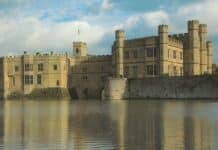


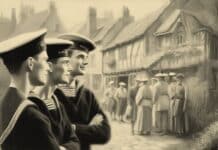



OMGGGGGG THIS SCHOOL IS HAUNTED AND I MIGHT DIE